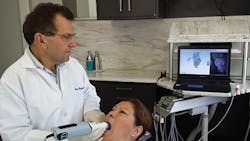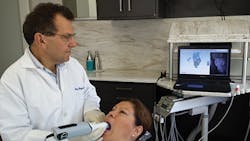The restorative digital dentistry puzzle: Including all of the necessary pieces
By Gary Kaye, DDS, FAGD
Various digital technologies have been available for several years, and the benefits they bring - streamlined workflow, same-day restorative abilities, and simplified procedures - are all well established. Many dental practices that integrate digital technologies are reaping rewards in all facets of their businesses, from increased productivity, professionalism, and profitability in the workplace, to happier teams, patients, and overall practice environments.
Yet investing such game-changing technologies requires more than searching the Internet for different options. Dental professionals must understand that transitioning from traditional to digital is a journey - not a one-time event - that involves critical evaluation of available options, making sound decisions, creating and implementing plans, and keeping those plans on track.
While this "road map" may seem straightforward, it is incumbent upon the leaders of the practice to recognize the financial, team, and treatment impacts of adopting digital technologies. They must also analyze their practices to determine whether digital technologies are right for them and, if so, to what extent. Finally, once they've decided to go digital, undertaking the proper steps to purchase and apply the technologies, based on objective and thorough assessment, is essential to identify the most appropriate digital technology for the practice.
At the New York Center for Digital Dentistry (NYCDD), before we selected and integrated the Planmeca PlanScan Restorative System (E4D Technologies), we developed a detailed plan for our transition to restorative digital dentistry (RDD) to ensure a smooth and seamless process, along with a scorecard we now use to assist other practices in their own journeys. Both are models for other practices to follow in their quests to maximize digital dental technologies to their fullest potentials.
Is Adopting digital technologies the right choice?
Incorporating digital dental technologies presents financial, human resource, workflow, and treatment implications, among others. Understanding these implications and what the practice can realistically bear is important to the decision-making process.
Financially, digital technologies are substantial investments. Some practices make the switch without realizing its full impact. They sign a check for equipment they know very little about, and their investment ultimately sits in a back room, dusty and unused. Similarly, investing in technologies that aren't the right fit for your practice, such as a system that is too expensive, has unnecessary components that your staff can't or won't use, or doesn't accommodate your workflow, can have serious implications beyond the financial.
These things happen because investing in digital technologies has implications for the staff members who will be consistently using it. This makes their input into the decision-making process imperative for acceptance, successful integration, and productivity. It is therefore incumbent upon the dental practice owner to assume a leadership role in guiding the decision-making process to ensure the chosen technologies align with the practice's core values and mission statement - just as all other major decisions in the practice should be made.
Additionally, digital technologies inherently affect treatment planning and the treatment options that the practice can offer patients, either immediately or in the future. Different systems have different capabilities ranging from eliminating traditional impressions with digital scanners, to enabling same-day restorations with in-office CAD/CAM fabrication.
If, after considering these implications and garnering staff input, the decision is made to "go digital," the next step is determining to what extent. Thoroughly understanding the practice, its workflow, its realistic capabilities, and its comfort level will weigh heavily in decisions about which types of digital technologies to incorporate into daily practice.
Determining your level of digital readiness
Is there a particular area of your practice that would benefit from an upgrade to digital technologies? Are you looking to completely revamp the restorative treatment options you offer patients by introducing same-day dentistry? Or are you and your staff the type who prefers to transition to new things incrementally, seeing how you, your staff, and your patients respond to updates and changes? If the latter, are you planning and prepared for additional upgrades in the future?
As the practice owner, how you lead your team through the practice self-evaluation process will determine the technologies you incorporate. You will decide when, how, and in what order things should be done. This, in turn, will impact the treatment options you offer your patients now and in the future. Therefore, in the midst of planning your immediate and future digital technology implementation, remember that your choice of technology vendor should reflect both your practice's current and future needs.
Asking questions and gathering information about how your practice operates and what goals you have are instrumental to identifying which digital technologies, if any, would be most beneficial. An algorithm developed by NYCDD can facilitate this process.
Once you've determined which level of technology is needed, selecting a vendor partner who meets your needs becomes the next critical decision. The vendor not only sells us the RDD equipment, but along with the manufacturer, provides training and support over the lifetime of the equipment.
Whether you choose to start slowly with an impression-free strategy or take the plunge and adopt a completely digital mindset, the right vendor is critical. For example, at NYCDD, our decision to use the Planmeca PlanScan Restorative System (E4D Technologies) afforded us the opportunity to integrate whatever technologies we needed, on whatever level. We could choose to purchase only a digital scanner to eliminate impression taking, or we could integrate an entire CAD/CAM system, from scanning to milling. Especially important to us was the ability to purchase technologies in increments, knowing that future purchases would fit seamlessly with our existing systems.
Planning the next steps
The first step after deciding to go digital and evaluating the level of technology you need is planning for your purchase and its integration. To do so, several factors should be taken into consideration. For example, this change will affect your practice workflow. Appointments may be shorter or longer and, therefore, will need to be scheduled differently. As a result, all staff members, from front desk managers to assistants, will need to adjust their workflows and change what they've done before.
Training and support are also significant considerations. You and your staff will require a significant amount of time for initial training and education. Failing to ensure sufficient time for thorough education could lead to missing goals, getting off track, and not maximizing the use of your new equipment. This could result in future problems, as well as the need to allocate additional time in the future to relearn and reintegrate the technology.
Vendor support is therefore a significant factor to consider when deciding from whom you will purchase. Will you be left on your own after initial training, or is there a strong support system with the vendor you select? The reassurance of assistance in the future when you need it will contribute to long-term, trouble-free use. For example, with Planmeca, we avail ourselves of their Support-on-Sight service, which provides us with technological and clinical help whenever needed, even remotely.
Keeping score of your options
Comparing multiple technology vendors to determine which will provide the best fit is easier when an objective assessment tool is used to evaluate key criteria. Developed by NYCDD, a scorecard enables practices to effectively weigh unique components against their individual practice concerns and requirements, (such as finances, service and support needs, and clinical uses) to assess vendors and their products. Combined, these assessments provide an overall score that makes the technical aspect of selecting a digital technology vendor hassle-free. This enables the practice owner to focus more time and energy on leading staff to address big-picture issues, such as identifying and working to ensure that digital technology selection and its planned uses remain aligned with the practice's core values. It also frees up the dentist to spend more time addressing practice-specific concerns, such as where to house equipment, answering staff questions, and bringing patients on board with any new procedures.
Conclusion
Once clinicians decide to go digital, having a road map along the journey is particularly helpful. Therefore, practice owners should have a concrete vision of what they want to achieve with digital technology integration, whether in terms of ROI, productivity, or restorative capabilities. Staff members should also be on board with these goals, having provided their input from the beginning. Adequate planning and preparation will allow dental practitioners to take advantage of all that restorative digital dental technology has to offer.
Gary Kaye, DDS, FAGD, founder of the New York Center for Digital Dentistry, has practiced comprehensive dentistry in New York City since 1993. He graduated from Columbia University of Dental Medicine in 1993 where he received awards in endodontics, prosthodontics, and geriatric dentistry. Dr. Kaye consults with other dentists and dental manufacturers and lectures on topics including ceramics, occlusion, and digital dentistry. He is on the guest faculty of Planmeca University in Dallas, Texas.

